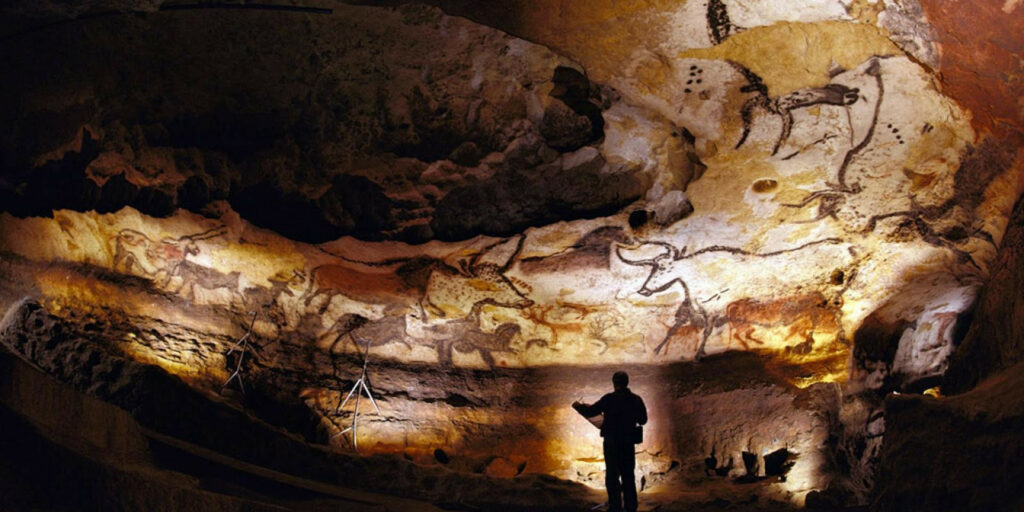A Chance Encounter with History

On a fateful day in 1940, four teenagers near Montignac, France, stumbled upon one of the most significant archaeological discoveries of the 20th century. While chasing their dog through a narrow passage, they accidentally uncovered the entrance to Lascaux Cave, a prehistoric art gallery that would captivate the world.
The Breathtaking Reveal

As the young explorers ventured deeper into the cave, they were met with an awe-inspiring sight. The walls were adorned with vivid, lifelike depictions of animals, humans, and abstract symbols, all meticulously rendered in earthy tones. This chance discovery would revolutionize our understanding of prehistoric art and culture.
A Masterpiece Frozen in Time
The Great Hall of Bulls

The main chamber of Lascaux, known as the Great Hall of Bulls, houses the cave’s most iconic paintings. Four massive black bulls dominate the space, with one measuring an impressive 17 feet in length. These majestic creatures are believed to have held deep spiritual significance for the cave’s Paleolithic inhabitants.
A Diverse Menagerie

Beyond the bulls, the cave walls showcase a remarkable array of animal representations. Horses, deer, ibex, aurochs, and even felines are portrayed with astounding detail, demonstrating the keen observational skills of the prehistoric artists.
The Significance of Lascaux
A Glimpse into Paleolithic Life

The artworks of Lascaux offer invaluable insights into the beliefs, customs, and daily lives of our ancient ancestors. The prevalence of animal imagery suggests a culture deeply connected to the natural world, possibly reflecting the importance of hunting or spiritual reverence for certain species.
The Dawn of Symbolic Thinking

The presence of abstract symbols and geometric patterns within the cave hints at the development of complex symbolic thinking among Paleolithic peoples. These artistic expressions not only showcase the creative capacities of our forebears but also shed light on the evolutionary origins of human cognition and artistic expression.
Preserving a Priceless Legacy
The Threat of Modern Times
Despite its immense cultural and historical significance, Lascaux Cave has faced numerous preservation challenges. The influx of visitors and use of artificial lighting began to take a toll on the delicate paintings, causing fading and the growth of harmful microorganisms.
Innovative Conservation Efforts
In 2008, the French government closed the original cave to the public to halt further deterioration. Scientists and conservationists have since been working tirelessly to protect this irreplaceable treasure. One innovative solution is Lascaux IV, a highly accurate facsimile of the cave that allows visitors to experience the wonder of the artworks without risking damage to the originals.
A Timeless Testament to Human Creativity

The discovery of Lascaux Cave stands as a humbling reminder of the enduring creative spirit that has defined the human experience for millennia. As we marvel at these prehistoric masterpieces, we are called to reflect on our shared heritage and the importance of preserving these irreplaceable links to our collective past. The legacy of Lascaux continues to inspire and captivate, bridging the vast expanse of time to connect us with our ancient ancestors through the timeless power of art.

